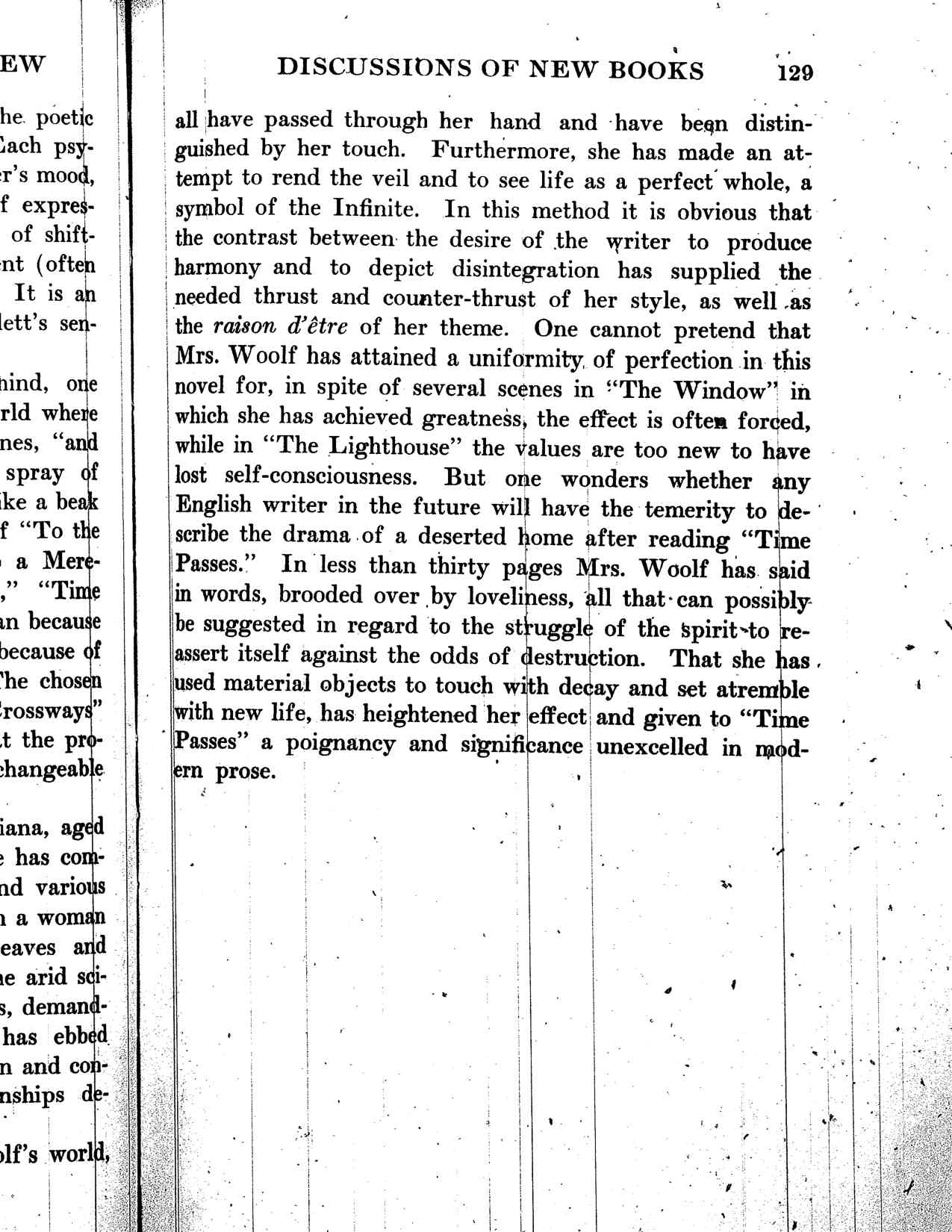
[next page]
all have passed through her hand and have been distinguished
by her touch. Furthermore, she has made an attempt
to rend the veil and to see life as a perfect whole, a
symbol of the Infinite. In this method it is obvious that
the contrast between the desire of the writer to produce
harmony and to depict disintegration has supplied the
needed thrust and counter-thrust of her style, as well as
the raison d’être of her theme. One cannot pretend that
Mrs. Woolf has attained a uniformity of perfection in this
novel for, in spite of several scenes in “The Window” in
which she has achieved greatness, the effect is often forced,
while in “The Lighthouse” the values are too new to have
lost self-consciousness. But one wonders whether any
English writer in the future will have the temerity to describe
the drama of a deserted house after reading “Time
Passes.” In less than thirty pages Mrs. Woolf has said
in words, brooded over by loveliness, all that can possibly
be suggested in regard to the struggle of the spirit to re-
assert itself against the odds of destruction. That she has
used material objects to touch with decay and set atremble
with new life, has heightened her effect and given to “Time
Passes” a poignancy and significance unexcelled in modern
prose.






